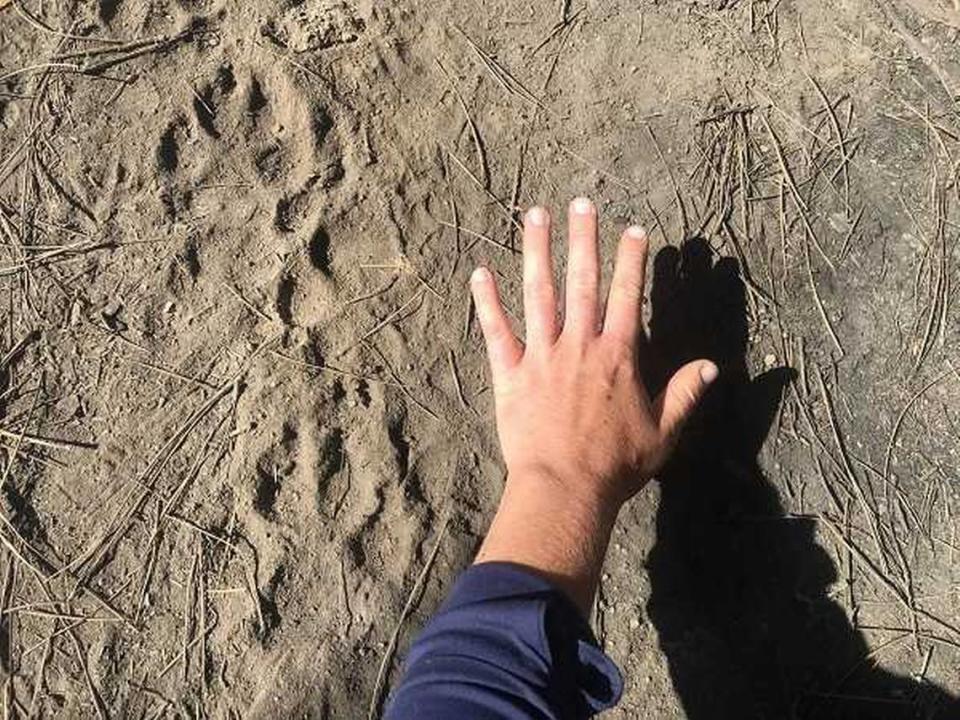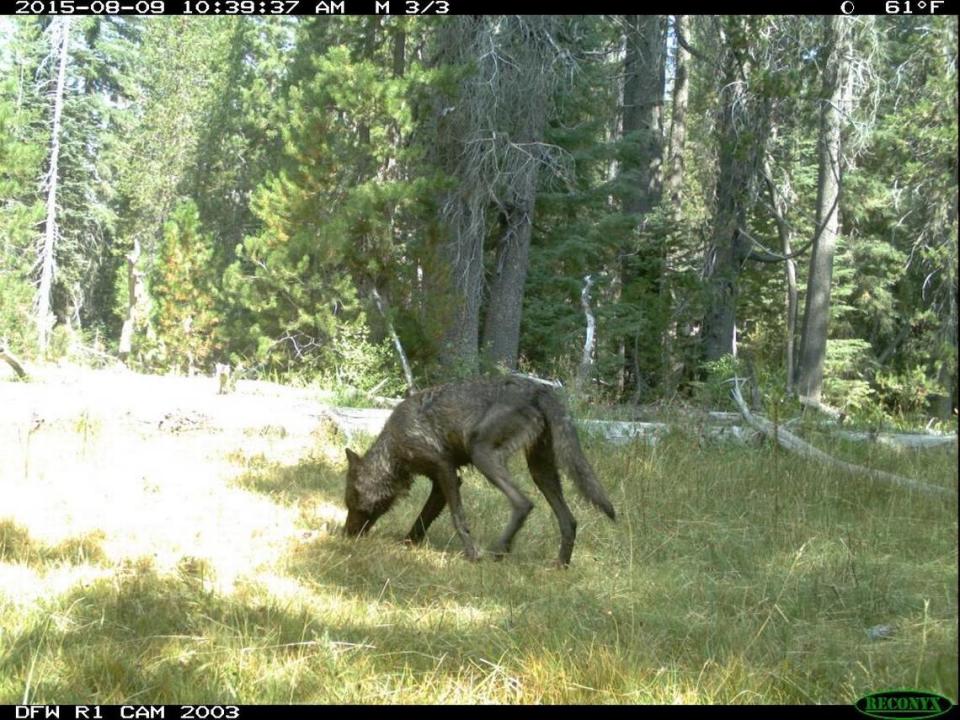Wolf packs roaming deeper into California. How likely is it you’ll see one in the wild?
For years, people have claimed to have seen wolves across California, including the central San Joaquin Valley.
But for a few rare cases, they’ve rarely been confirmed.
“Misidentifications have always been an issue,” says Jordan Traverso, deputy director of communications with the state’s Department of Fish and Wildlife, which has been monitoring wolves since they began to naturally repopulate the Golden State in 2011.
“We’ve been having people identify wolves or say that they have a wolf sighting that turns out to be a coyote, really, really regularly.”
So, it felt like a seminal moment when the department earlier this month confirmed a sighting and announced the existence of a wolf pack in the Sequoia National Forest of Tulare County.
This was a completely new pack, meaning none of the wolves had been detected or tracked in the state before. And they were at least 200 miles — but likely closer to 300 — from their nearest known counterparts.
“Which means, they are using more of their restored habitat to repopulate and to disperse,” Traverso says.
Wolves used to roam the entirety of California, but the state enacted laws to protect livestock and by 1924 the animals seemed to have disappeared. “Since then the landscape has changed dramatically,” she says.
The discovery of new wolves in a new area of the state shows that the department’s conservation efforts have been successful in that the animals were able to find the things they need to survive: food and water and cover.
“That is a great ecological story.”
For the sake of its research, the department defines a pack as “two or more wolves traveling together and using a definable area.” In the case of the Sequoia wolves, there were at least five confirmed: a mother with four offspring.
That mother is a direct descendant of OR-7, the original wolf that entered the state 12 years ago.
The father is a descendant of the Lassen Pack, currently the state’s best documented wolf pack.

Wolf pack in Tulare County
As of yet, this new pack doesn’t even have a name.
Officials refer to it as “the pack that is established in Tulare County,” though they are working with native tribes in the area to come up with a suitable name.
Eventually, the department plans to get a collar on one of the wolves, though that won’t happen right away. There are numerous logistical issues that have to be figured out, and there’s a chance that they’re fail to find the wolves when the time comes.
The department of Fish and Wildlife captured and collared of two gray wolves in Siskiyou County. It took a full month and required the use of a helicopter, capture crew and fixed-wing plane.
It’s hard to say whether this particular pack will make a permanent home in the Sequoia National Forest, but it could stay for a few years. The Lassen Pack stayed in the same general area to have pups multiple years in a row, Traverso says.
And there’s been a lot of movement among wolf packs in the northeastern part of the state.
Some are absorbing members as other packs disperse or disband.
“That movement is really making it a little bit hard to see what they are doing,” Traverso says.
“We are monitoring it and we hope to have a better assessment of that soon.”
It will be released in the department’s quarterly wolf report.
Wolves and livestock
Some in the Central San Joaquin Valley are already beginning to worry about potential conflicts as the wolves make their way down the state and into more populated areas.
The Tulare County Cattlemen’s Association is calling for the department to collar the Sequoia wolves as soon as possible, lest the animals get in the habit of relying on livestock for food.
“Wolves in northern California have killed or maimed dozens of cows and calves in recent years, and likely many more that have gone unreported,” the group’s president John Hammon said in an email to The Fresno Bee.
In June, the Fish and Wildlife Department investigated three livestock deaths possibly caused by wolves.
Only one was confirmed to be killed by a wolf.
“Wolf presence also stresses cows, impacting weight gain and even causing cows to abort their calves,” Hammon wrote.
In 2021, the state appropriated money to offer compensation grants to farmers and ranchers affect by wolf populations. So far, it has paid out more than $750,000, according to the Chico Enterprise Record.
California wolf population ‘small, but burgeoning’
California’s wolf population, Traverso says, is “small, but burgeoning.”
The number of wolves in California that are known to researchers that can be monitored and tracked is less than 50.
So while, this new pack does bring the potential for more wolf sightings in the area, it’s still unlikely most people will come across a wolf in the wild. The animals typically want nothing to do with populated areas. The bulk of wolf sightings, including the one in Sequoia National Forest, come from people doing environmental work in remote locations.
“Stealth is definitely one of their features,” Traverso says.
“It is really, really still unlikely to have a sighting of a wolf.”
People are still encouraged to report any potential wolf sighting, along with photos and other documentation, through the department’s online portal.


